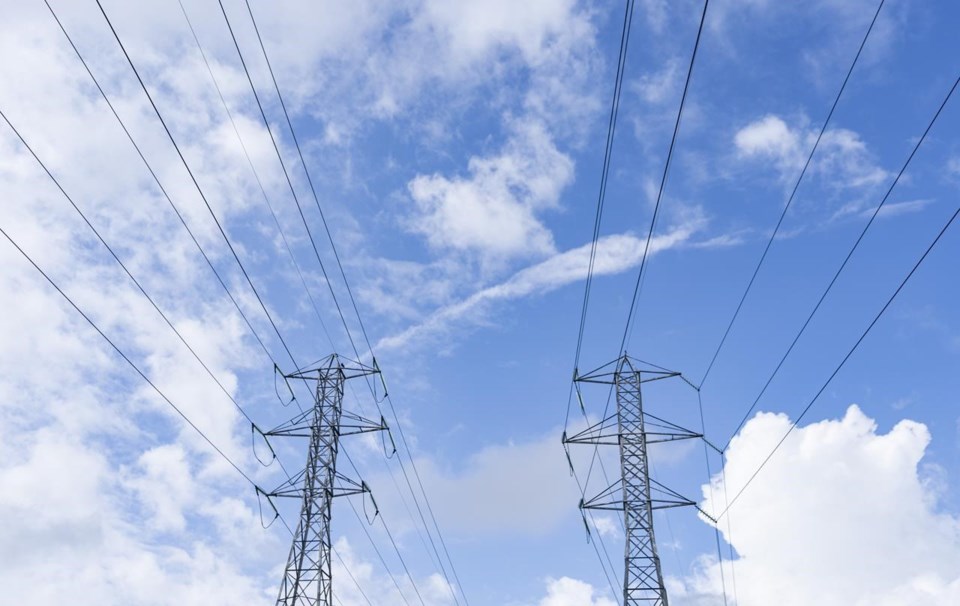CALGARY — Alberta's electricity market is headed for a major shakeup, but some industry players fear a lengthy period of uncertainty could scare away badly needed investment in power generation.
Power companies have been awaiting more details since shortly after last year's provincial election, when the UCP government's newly appointed Utilities Minister Nathan Neudorf was mandated to develop a plan for Alberta's electricity grid and address soaring consumer energy bills.
On Monday, companies received more details. At a power industry conference in Banff, Alberta Electric System Operator chief executive Mike Law said his organization has been tasked by the provincial government with drafting the design for a restructured energy market by fall 2024.
He said the aim is to have new electricity market rules in effect in Alberta by 2027.
"It is apparent that the status quo is not sustainable, and we need to act now to restructure our energy market so it can meet our current, but also our future needs," Law said in a draft copy of the speech he gave at the event.
"With government’s direction now received, our immediate next steps involve collaborating closely with stakeholders to build out the detailed design."
But the prospect of a lengthy review period with new rules that won't come until 2027 is making some industry players jittery.
On Tuesday, the Canadian Renewable Energy Association (CanREA) said it is concerned about what it calls "prolonged and increasing uncertainty" for Alberta’s renewable energy sector, which could make the province a less attractive place to invest.
"Hopefully we can come up with something that works in a short period of time and provide some certainty to the market, but the biggest risk right now is that we have too much uncertainty for investors to make a fair decision about projects," said CanREA president Vittoria Bellissimo.
She added any market reform must encourage wind, solar and energy storage technologies to play a foundational role in the province's electricity system of the future. But she added a lengthy period of market overhaul will harm a sector that was already caught off-guard earlier this year when Alberta's government imposed a temporary moratorium on renewables development in order to draft new rules for that sector.
Alberta's electricity market is unique in Canada, in that it is a for-profit, deregulated system. It pays generators only for the power they actually dispatch onto the grid and pays nothing for standby generating capacity.
Under former Premier Rachel Notley's NDP government, there had been a plan to transition from an "energy-only" to a capacity market, but the UCP later scrapped it.
Speaking at the industry conference Monday, Neudorf said the UCP government remains committed to an energy-only model on the grounds that it encourages competition in the market.
But he said significant reforms are needed to make the system work. The current market’s rules were designed 25 years ago, when the bulk of Alberta's power was generated by coal-burning plants. Today, the rapid phase-out of coal combined the astonishing growth of renewable power — in 2023, Alberta accounted for over 90 per cent of Canada's total deployment of new wind and solar facilities — means the old rules are no longer optimal.
In a particularly high-profile example, Alberta was forced to declare an emergency grid alert in January when the system — under pressure from a number of natural gas plant outages as well as wind that was not blowing — came close to buckling.
The province also found itself having to offer temporary electricity rebates last summer to help residents with dramatic spikes in their power bills.
Alberta, which has very little access to hydroelectric resources, is also under pressure to rapidly decarbonize its grid in the face of the federal government's proposed Clean Electricity Regulations. The province, which still depends on fossil fuels in the form of natural gas to provide non-intermittent, dispatchable power to the grid, has said it cannot achieve the federal targets by 2035 without jeopardizing the stability and affordability of the province's power system.
Alberta Premier Danielle Smith has previously estimated that transitioning Alberta's electricity grid to clean power could cost upwards of $400 billion, and many experts say that's a fair estimate given the work that will be required.
In his speech, AESO president Law said the aim of a restructured energy market is to have a "balanced perspective" on generation types. He said cornerstones of the proposed reforms include improved incentives for generators offering controllable, flexible resources.
Another proposal is the creation of a "day-ahead market" which will allow power producers to offer their electricity for the next day's use rather than the real-time market the AESO currently operates.
In an emailed statement, Edmonton-based Capital Power said the company is pleased the province has committed to retaining the energy-only system, but said investor certainty remains of paramount importance.
"As an independent power producer, we’re making significant, long-term investments in Alberta’s energy future and so the details for the Restructured Electricity Market will be critical," said Capital Power's senior vice-president of external relations Pauline McLean.
This report by The Canadian Press was first published March 12, 2024.
Amanda Stephenson, The Canadian Press




